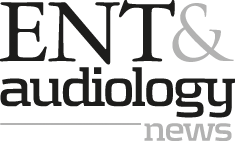Audiology features
Understanding the NAL-NL3 Prescription System: a new era of personalised hearing aid fitting
The NAL-NL3 system marks a transformative step in hearing aid fitting, shifting from a one-size-fits-most prescription to a modular, patient-centred approach. Developed by the National Acoustic Laboratories, this new system integrates a core audiogram-based prescription with targeted modules to address...
Vulnerability in audiological care: insights from Brené Brown and Kristin Neff
Embracing emotional openness and self-compassion can improve outcomes and relationships in the often-overlooked emotional landscape of audiological care. Audiological care is a deeply personal and often emotional journey for individuals experiencing hearing loss or other auditory challenges. Beyond the clinical...
Dementia assessments for people with deafness, deafblindness or visual impairment in Scotland
How is the medical community doing with assessing cognitive decline in those with a sensory impairment? The ALLIANCE Scottish Sensory Hub was tasked with finding out. Background There is growing evidence of a connection between dementia and sensory loss. However,...
Planes, trams, and auditoriums: Beware predatory conferencing
Predatory conferences are a growing concern. First highlighted in our sister magazine, Eye News*, the issue affects all areas of medicine – including ENT and audiology. With inboxes filling up with flattering invitations to ‘global’ meetings in glamorous destinations, it’s...
OBITUARY: Jack Katz
Jack Katz. With deep respect and admiration, we remember Jack Katz as a towering figure in the field of audiology whose influence has left an indelible mark on generations of clinicians, educators, and researchers. Dr Katz’s passing is a profound...
Sound advice for staying healthy: promoting holistic health in adults with hearing loss
Hearing loss is linked to chronic conditions like dementia and heart disease. Dr Maidment explores how integrated healthcare can improve outcomes, highlighting the need for a multidisciplinary approach. Emerging evidence suggests that hearing loss is associated with an increased risk...
From technology to humanity: a conversation on person-centred hearing care
With a career that has spanned continents and disciplines – clinical audiology, cochlear implant technology and global leadership – Mei Dingxiang Feng is now leading a movement to bring person-centred care (PCC) to the forefront of hearing healthcare. In this...
Where ART meets Science: The Golden Lines of Life
Each cover in this six-part series is more than an image. It’s a window — into a different way of seeing, of hearing and of healing. Together, they form a narrative that moves across disciplines and perspectives. A story told...
Big data and the future of cochlear implant aftercare
With a million people using cochlear implants worldwide, the time is right for us to harness this vast data for patient benefit. Every day, cochlear implant (CI) processors quietly collect data: how long they’re worn, how often users switch programs...
Barriers and facilitators to app use in Australian audiology clinics
Too old to app? Time to think again! Bec Bennett discusses why it’s time for healthcare professionals to hit reset on expectations of digital literacy. Mobile health (mHealth) apps have the potential to enhance audiological care by supporting the self-management...
Does the overuse of noise-cancelling headphones cause APD?
Have you heard the noise around APD? With a flurry of interest around noise-cancellation and APD, Dale Hewitt offers his take on the evidence and theory. When and why did this question first arise? An article was published by BBC...
Ear wax removal: should anyone and everyone perform it?
Earwax removal is a controversial and much-debated issue in audiology. Risks and public safety call for reforms, sparking discussion on professional standards. Earwax is a natural secretion produced by the ear. It is an amalgamation of desquamous epithelial skin cells,...

















